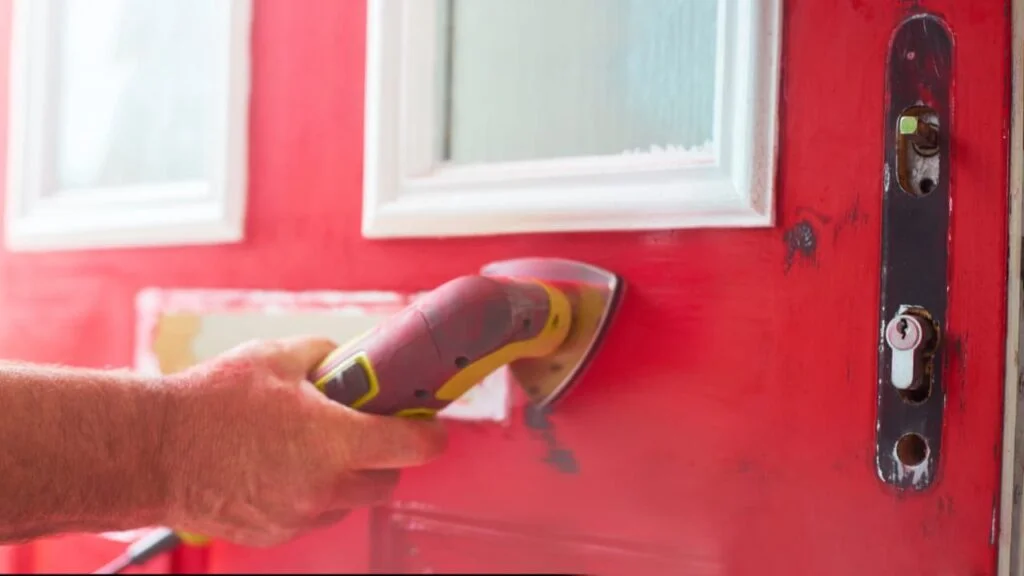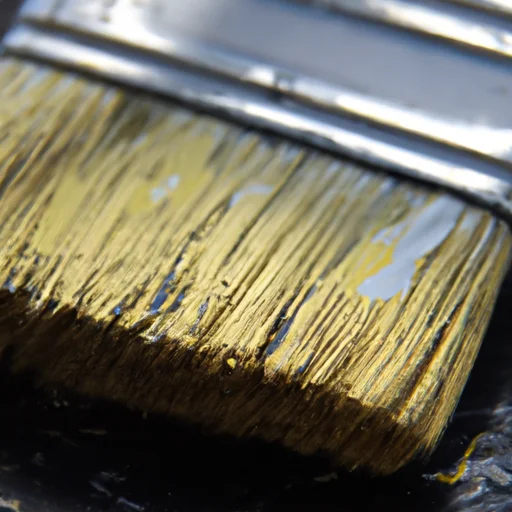Painting a room can be a labor-intensive task, but one that can give your space a fresh new look. However, have you ever wondered what might happen if you skip the step of sanding between coats of paint? Well, let’s just say it’s not a good idea. Sanding between coats of paint is essential for achieving a smooth and flawless finish, as it helps to remove any imperfections, bumps, or drips that may have occurred during the previous coat.
Not only does sanding improve the overall appearance of your paint job, but it also helps subsequent coats adhere better, creating a longer-lasting and more durable finish. So, before you grab that paintbrush again, make sure to take the time to sand between coats – your walls will thank you for it.

What Happens If You Don’t Sand Between Coats Of Paint?
Table of Contents
Painting a room or a piece of furniture can be a satisfying and transformative experience. It allows you to refresh and update the look and feel of your space, whether it’s a new color on the walls or a fresh coat on an old piece of furniture. But did you know that one often overlooked step in the painting process can have a significant impact on the final result? That step is sanding between coats of paint.
Potential Problems with Paint Adhesion
Paint adhesion is crucial if you want your paint job to last and look good for years to come. Without proper adhesion, the paint can easily peel, chip, or flake off, leaving an uneven and unattractive appearance. By not sanding between coats of paint, you risk compromising the paint’s ability to adhere to the surface properly.
When you apply a fresh coat of paint without sanding the previous one, you create a smooth and sealed surface that the new paint struggles to bond with. The presence of the smooth, sealed surface can hinder the new coat from adhering properly, leading to a paint job that is prone to premature failure.
Uneven Texture and Surface Imperfections
Another consequence of not sanding between coats of paint is the potential for an uneven texture and surface imperfections. Sanding helps to smooth out any rough patches, ridges, or bumps from the previous coat of paint. It creates a more even and consistent surface, ensuring that the next coat of paint goes on smoothly.
Without proper sanding, these surface imperfections will show through in the final result. Whether it’s a lump of dried paint or a small bump, these flaws can stand out, detracting from the overall appearance of your paint job.
Visible Brushstrokes and Roller Marks
One of the most common problems that can arise when you don’t sand between coats of paint is the visibility of brushstrokes and roller marks. Even if you apply the paint evenly with a brush or a roller, the lack of sanding can prevent the paint from being absorbed properly into the surface.
When the paint doesn’t blend seamlessly, the brushstrokes or roller marks become apparent. This can result in a less professional-looking finish, taking away from the smooth and flawless appearance you were hoping for.
Inconsistent Paint Coverage
Inconsistent paint coverage is another issue that can arise from not sanding between coats of paint. Without sanding, the surface may still have areas that are slightly slick or glossy due to the previous paint coat. When you apply the next coat of paint, it may not cover those areas evenly, resulting in visible variations in color and tone.
These inconsistencies in paint coverage can be particularly noticeable with darker or vibrant colors. The lack of sanding can prevent the pigments from adhering evenly, leading to a blotchy or streaky appearance.
Difficulty Achieving a Smooth Finish
If your goal is to achieve a smooth and flawless finish with your paint job, then sanding between coats is essential. Sanding helps to create a surface that is comfortable to the touch and visually appealing. It allows each coat of paint to blend seamlessly, resulting in a more professional-looking finish.
Without that extra step of sanding, you may find it more challenging to achieve the desired level of smoothness. It becomes more difficult to hide surface imperfections, and the overall finish may lack the level of polish you were aiming for.
Longer Drying and Curing Times
Skipping the step of sanding between coats of paint can also result in longer drying and curing times. When you apply a fresh coat of paint over an unsanded surface, the previous coat may still have areas that are not fully cured or dried. The new coat of paint needs to work harder to penetrate those areas and dry properly.
As a result, the overall drying and curing times can be significantly extended. This can be frustrating if you’re eager to complete your painting project quickly or if you need to use the painted surface sooner rather than later.

Increased Risk of Peeling and Chipping
One of the most significant risks of not sanding between coats of paint is an increased likelihood of peeling and chipping. As mentioned earlier, paint adhesion is compromised when you skip the sanding step. The new coat of paint may not properly bond with the previous one, making it prone to peeling or chipping away.
When the paint begins to peel or chip, it can be challenging to fix or repair. You may need to strip off all the layers of paint and start from scratch, which can be time-consuming and costly.
Lack of Durability and Longevity
When you don’t sand between coats of paint, the overall durability and longevity of your paint job can suffer. Properly sanding between coats ensures that each layer of paint adheres firmly to the surface, creating a strong and long-lasting bond.
Without that solid bond, the paint job may start to degrade more quickly over time. You may notice signs of wear and tear, such as peeling, chipping, or fading, sooner than you would with a properly sanded and bonded paint job.
Limited Options for Repairs and Touch-ups
One of the final consequences of not sanding between coats of paint is limited options for repairs and touch-ups. In a properly sanded paint job, it is easier to touch up small areas or fix any imperfections that may arise over time. The existing layers of paint provide a stable and even surface for new paint to adhere to.
Without sanding, the surface remains uneven and more challenging to repair. Any touch-ups or repairs may stand out and be more noticeable, taking away from the overall appearance of your paint job.
Recommendations for Proper Paint Application
To ensure a successful and long-lasting paint job, it is crucial to follow proper paint application techniques. Here are some recommendations for achieving the best results:
- Clean and prepare the surface: Before applying any paint, make sure the surface is clean and free of dirt, grease, and loose particles. This will help the paint adhere better and create a smooth finish.
- Sand between coats: Take the time to sand the surfaces between each coat of paint. This will help smooth out any imperfections, aid in paint adhesion, and ensure a more consistent and professional-looking finish.
- Use appropriate sandpaper grit: Choose the right sandpaper grit for the job. A finer grit sandpaper (around 220 or higher) is suitable for most surfaces. However, if you need to remove thick layers of paint or smooth out rough areas, you may start with a coarser grit and gradually move to a finer grit for a polished finish.
- Wipe away sanding dust: After sanding, be sure to thoroughly wipe away any sanding dust. This will prevent it from mixing with the paint and causing a rough or gritty texture on the surface.
- Follow manufacturer instructions: Always follow the recommended drying and curing times provided by the paint manufacturer. This will ensure that each coat of paint has enough time to dry and bond properly with the surface.
By taking the extra step of sanding between coats of paint, you can significantly improve the overall quality and longevity of your paint job. It may require a bit more time and effort, but the end result will be well worth it. So, next time you’re tackling a painting project, don’t forget the importance of sanding between coats. Your walls and furniture will thank you with a smooth, durable, and flawless finish.

Upgrade Your Painting Game
Explore our Introduction To The Best Paint Sprayers guide to take your projects to the next level!

